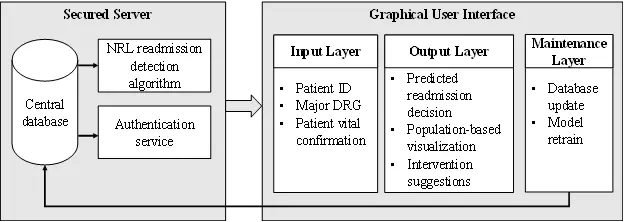An Embedded Machine Learning Model for Early Detection and Intervention of High-Risk Intensive Care Unit Readmission Patients

Abstract
Hospitalized patients who are transferred out from the Intensive Care Unit (ICU) but readmitted within three days are considered ICU readmission. Compared with general hospital readmission, ICU readmission brings higher morbidity and mortality risks along with more financial and labor expenses because ICU requires a higher nurse-to-patient ratio and closer monitoring of high-risk patients. Early prediction and prevention of potential ICU readmission benefits both healthcare providers and patients. In this work, we designed an embedded machine learning (ML) system to detect individuals with high ICU readmission risk and support healthcare providers’ decisions on further interventions based on population health informatics. To discover patterns from the sparse and imbalanced ICU data, an algorithm called explainable ML with noise reduction (NRL) is proposed to predict patient readmission risk and identify controllable variables for early intervention. The proposed algorithm is tested on the MIMIC-II and achieved a better performance with an improvement of over 113% on sensitivity compared with widely utilized models, including logistic regression and decision tree, in predicting ICU readmission. A graphical user interface of the embedded machine learning system is further designed to illustrate a case study on its application in ICU readmission early detection and intervention in practice.
Supplementary notes can be added here, including code, math, and images.